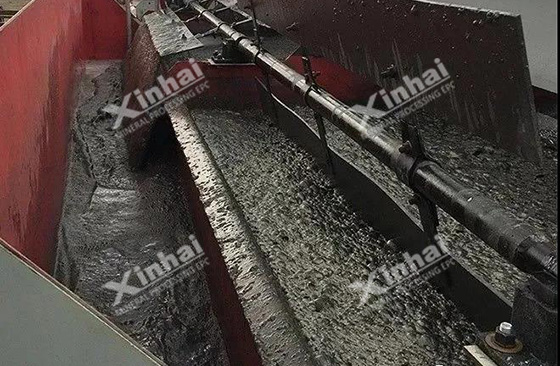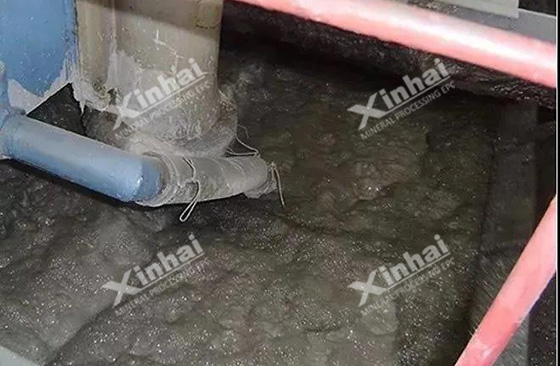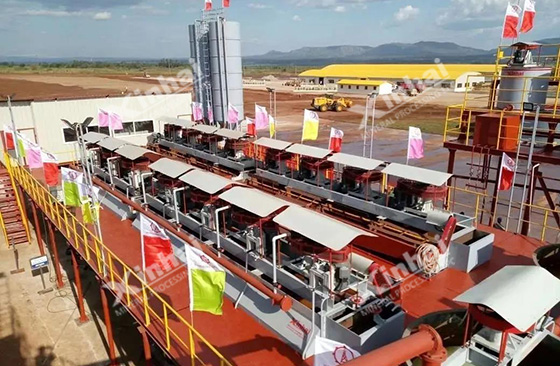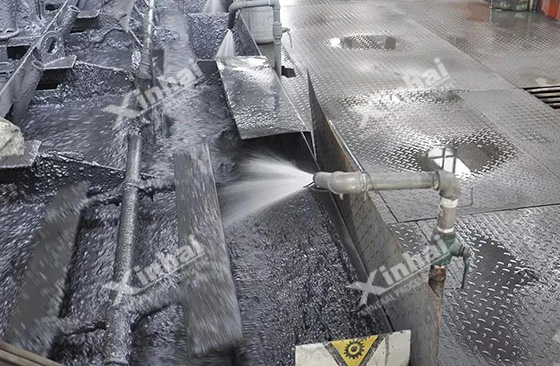How to Judge the Effect of Flotation Cell According to Flotation Froth?

One of the most important skills for a flotation cell operator is to observe the flotation froth and judge the effect of the flotation cell according to the condition of the flotation froth. Usually, an experienced flotation cell operator can judge the cause of changes based on the appearance of the flotation froth, so as to adjust the amount of flotation reagent added, concentrate scraped out and the amount of middlings circulation in time to ensure the normal operation of the flotation cell.
The appearance of flotation froth mentioned here is mainly determined by the type, amount, particle size, color, luster, density, and amount of frothing reagent attached to the surface of the flotation froth, including the virtual and real, size, and color of the flotation froth, luster, shape, thickness, intensity, brittleness and viscosity, sound, etc.
1. The virtual and real of flotation froth
Flotation cell operators usually take the “virtual and real” of flotation froth as the basis for judging the degree of mineralization. If the mineral particles attached to the surface of the froth are many and dense, it is “real”; if the mineral particles attached to the surface of the froth are few and thin, it is “virtual”. To get the ideal flotation effect, the mineralized froth in the roughing cell should be “real”, and the mineralized froth in the scavenging cell should be “virtual”.

For the same froth flotation process, the change of froth’s “real” and “virtual” reflects the change of flotation situation. When the grade of raw ore is high and the dosage of flotation reagents is appropriate, the flotation froth in the roughing will appear “real”. When there are too many inhibitors and few collectors, the flotation froth will become “virtual”. In some mineral flotation operations, using too many collectors and activators but few inhibitors will cause the flotation froth to be too “real” and cause “Phenomenon of Plate”. This is not conducive to the flotation effect in the froth flotation process.
2. The size of flotation bubbles
In the production site, the flotation cell operator can obtain the ideal mineralized froth by adjusting and selecting the appropriate bubble size. Of course, different ore and different flotation operations make different bubble sizes. In sulfide ore flotation operations, bubbles with a diameter of 8-10 cm or more are generally called big bubbles, those with a diameter of 3-5 cm are medium, and those with a diameter of 1-2 cm or less are small.

The size of flotation bubbles is closely related to the degree of mineralization of the bubbles. When the degree of bubble mineralization is good, the size of the flotation bubbles is medium, which usually appears in the roughing area and concentration area. When the degree of bubble mineralization is poor, flotation bubbles tend to merge into big bubbles. Though big bubbles are merged by small bubbles continuously with the poor mineralization, they cannot withstand the impact of pulp surface fluctuation and are easy to burst, resulting in more small bubbles generated in the scavenging area.
Moreover, the size of the flotation bubbles is usually controlled by flotation reagents. Generally, the more amount of frothing reagents, the smaller bubbles; the more amount of lime, the bigger bubbles; the more amount of inhibitors, the smaller bubbles.
3. The color of flotation froth
The color of the flotation froth product is usually determined by the color of the ore attached to the surface of the froth. For example, chalcocite flotation froth is lead-grey, chalcopyrite flotation froth is green gold, galena flotation froth is lead-grey, sphalerite flotation froth is yellowish-brown, and hematite flotation froth It is brick red.
In the scavenging area, the froth at the tail is often white as water film’s color. The darkening color of froth in the scavenging area indicates more metal loss in the tailings. The darkening color of floating minerals in the concentration area indicates the better quality of the concentrate.

4. The luster of flotation froth
The luster of the flotation froth is also determined by the luster of the water film and the ore attached to the surface of the froth. Generally, sulfide minerals show strong metallic luster, while oxide minerals mostly show semi-metallic luster or earthy luster. When the flotation froth in the scavenging area shows the semi-metallic luster, it indicates that the metal loss is large.
Besides, if mineral particles of floating minerals are coarse, the froth has a rough surface and weak luster. If mineral particles of floating minerals are fine, the surface of the froth has a smooth surface and strong luster.

5. The shape of flotation bubbles
When the froth mineralized by the medium hydrophobic mineral particles is formed on the surface of the pulp, there is sufficient moisture for each bubble to be distinctly shaped. If the froth remains on the surface of the pulp for a long time, the mineral is highly hydrophobic, and the bubble shape is fuzzy after the bubble wall has dried up and becomes incomplete.

6. The thickness of the flotation froth
The thickness of the flotation froth layer is mainly related to the amount of frothing reagents and the degree of bubbles’ mineralization. If the amount of frothing reagents used is large, the grade of raw ore is high, the concentration is dense, and the degree of mineralization is good, then the froth layer is thick. The opposite is thin.
Furthermore, if particles of floating minerals are too coarse, it will be difficult to form the thick froth layer. The concentrated area has a low pulp surface, thick froth layer, and high concentrate grade. The scavenging area keeps a high pulp surface, and floating minerals can be scraped out in time. With a thin froth layer, the recovery rate is high.
7. Brittleness and viscosity of flotation froth
If the flotation froth has strong brittleness, then the stability is poor, froth is easy to burst and sometimes is difficult to get scraped out. On the contrary, if the flotation froth has strong viscosity and stability, it will make the flotation cell go wrong, disrupt the froth flotation process, and cause difficulty in transporting the concentrate.

8. The sound of flotation froth
When the scraper scrapes the flotation froth into the froth tank, a “rustling” sound indicates that the flotation froth contains a lot of minerals with a large specific gravity and coarse particles.
The above eight kinds of flotation froth appearance are the important basis for judging the effect of the flotation cell. Of course, the appearance of the flotation froth varies from different floatation area to area, but certain floatation areas are usually associated with certain appearances. Flotation cell operators can focus on some floatation areas such as the final concentrate flotation tank, various dosing tanks and the scavenging tailings tank. Summarize and judge carefully in the continuous operation and practical experience to obtain the ideal flotation effect.




